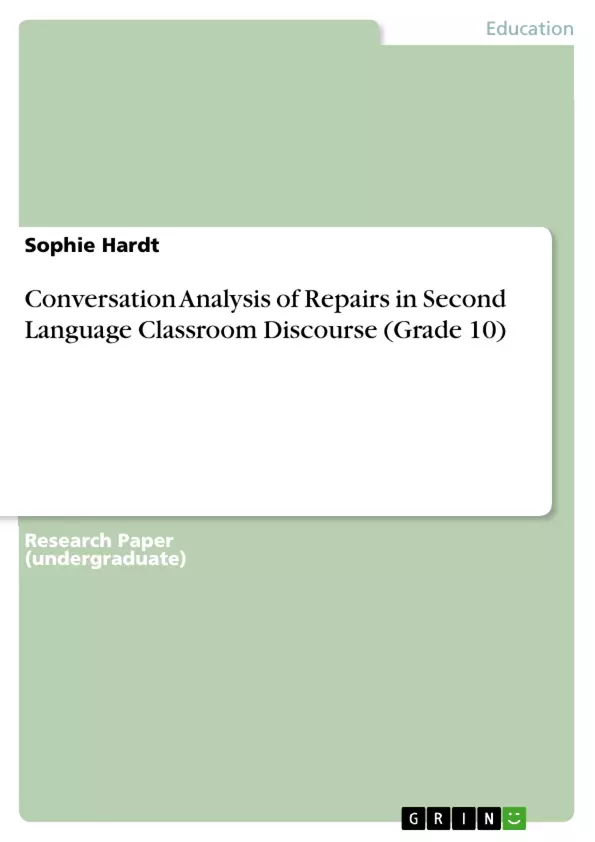This paper will focus on conversation analysis of classroom discourse in second language classrooms. Since there are many aspects to spoken discourse, such as turn taking, openings and closings, the author chose to focus on repairs as error corrections, which is common for classroom discourse. Therefore, the paper analyses which type of repair is the most dominant among all four types that one would encounter in second language classrooms.
Inhaltsverzeichnis (Table of Contents)
- I. INTRODUCTION
- II. THEORETICAL BACKGROUND
- Repairs in General
- Classroom Discourse
- L2 Classroom Discourse
- III. CONVERSATION ANALYSIS
Zielsetzung und Themenschwerpunkte (Objectives and Key Themes)
This paper aims to analyze repair practices in second language (L2) classroom discourse, focusing on the dominant type of repair among the four identified types. It examines the characteristics of L2 classroom discourse, highlighting the role of error correction and its implications for language learning. The analysis is based on a transcript of a grade ten English lesson in Germany.
- Conversation Analysis (CA) of L2 classroom discourse
- Types of repairs in spoken discourse
- Error correction in L2 classrooms
- The role of the teacher in facilitating repairs
- Analysis of repair practices in a specific L2 classroom transcript
Zusammenfassung der Kapitel (Chapter Summaries)
The introduction defines conversation analysis (CA) and its application to classroom discourse. It then narrows the focus to repair practices in L2 classrooms, particularly error correction, and outlines the paper's structure. The theoretical background provides a comprehensive explanation of repair mechanisms in general, classroom discourse characteristics, and L2 classroom discourse specificities. The chapter details the four types of repairs: self-initiated-self-repair, self-initiated-other-repair, other-initiated-self-repair, and other-initiated-other-repair. It also discusses the role of error correction in L2 classrooms, including the debate on its effectiveness. Finally, the conversation analysis section presents examples of repair practices from the chosen transcript, illustrating the different types of repairs and their occurrences.
Schlüsselwörter (Keywords)
This paper focuses on conversation analysis, second language classroom discourse, repair practices, error correction, L2 learners, teacher-student interaction, and the analysis of a transcript of a grade ten English lesson in Germany. It aims to contribute to understanding the dynamics of repair and error correction in L2 classrooms and their impact on language acquisition.
- Quote paper
- Sophie Hardt (Author), 2018, Conversation Analysis of Repairs in Second Language Classroom Discourse (Grade 10), Munich, GRIN Verlag, https://www.grin.com/document/919802



